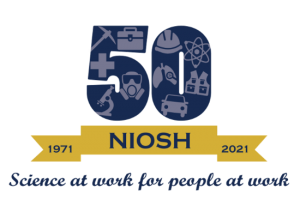The Rise and Fall of Lead in the Workplace
Posted on byLead Seemed to be Everywhere

From ancient civilizations to the mid-20th century, lead seemed to be a gift from the gods. Its durable, malleable, and corrosion resistance properties made this metal invaluable. It was in such high demand, the Roman Empire began massive lead mining operations. In fact, the English word “plumbing” came from the Romans’ use of lead to build water pipes for their municipal infrastructure. The chemical symbol for lead (Pb) was derived from the Latin word “plumbum”.
Due to its many qualities, lead was used in many products, including construction material, pottery glaze, glass, cookware, utensils, cosmetics, coins, and weapons. Perhaps the most shocking, lead was used as a sweetener called sapa. Sapa, made by boiling grape juice in lead pots, was used to sweeten food and preserve wine. Ancient Romans were in contact with lead constantly, in one way or another.

Lead Use in the U.S.
In the U.S., lead mining began in Virginia in 1621 and from there the lead business boomed. Industries used lead just about any way they could, and by the twentieth century the U.S. became the world’s leading producer and consumer of lead.
Within the U.S., lead was used in several ways. Two of the main uses were in
- Paint, to enhance durability and appearance, and
- Tetraethyl lead (TEL) gasoline, to improve engine performance.
Unfortunately, both lead-based paint and TEL gasoline would become an American staple for years to come.
Linking Lead Exposure to Health Problems
The use of lead throughout the world came with devastating health consequences. Even the Romans documented lead poisoning (i.e., Plumbism), noting it caused paralysis, madness, gout, colic, and death. Symptoms of lead poisoning were especially pronounced among lead miners and smelters. The impact of these exposures extended beyond those working with lead, manifesting among other family members and children.
Lead Paint: Paint of Deception

In a letter to his friend in 1786, Benjamin Franklin documented his experience with the harmful effects of lead. During a visit to a hospital in Paris, he noted most patients there worked in trades that use lead, such as painting and typesetting.
By the 1920’s, the negative effects of lead poisoning in the U.S. were well-recognized. Professional painters, who were often independently employed and thus had little to no workplace safety protection, bore the brunt of lead poisoning deaths. Between 1925 and 1927, more painters died from lead poisoning than all other occupational groups combined. Despite the risks, the painters continued to advocate for the use of lead paint, which was considered superior at that time. As a result, lead paint in residential properties became a significant public health problem. Young children who ingested lead chips or inhaled lead dust from deteriorating lead paint developed physical and neurological symptoms consistent with acute lead poisoning. Subsequently, lead poisoning was found to have long-term impact among children. In 1922, this prompted the International Labor Organization (the League of Nations) to ban interior lead paint. Although more than 20 countries agreed to this ban between 1922 and 1955, the U.S. declined to enact the ban.
It took another 50 years, in 1971, before the U.S. Congress passed the first federal regulation on lead paint. The Lead-Based Paint Poisoning Prevention Act restricts the use of lead paint in federally-funded or federally-assisted housing. In 1978, the U.S. Consumer Product Safety Commission issued a final ban on the use of lead paint in all residential housing. Today, the remnants of lead paint on commercial and residential structures continue to be a major environmental and public health problem.
Leaded Gasoline: Poisonous Fuel
In the 1920’s, the other major use of lead in the U.S. captured national attention when the production of TEL gasoline led to 15 worker fatalities, with many more succumbing to psychotic episodes due to lead exposure. A four-decade long tug-of-war between science, industry interests, and politics ensued. Scientists, such as Alice Hamilton and Clair Patterson, argued leaded gasoline was not only dangerous to workers but could cause widespread health problems among the rest of the U.S. population. Meanwhile, TEL industries continued to downplay the dangers of lead through industry-sponsored research. Eventually, the scientists were proven right.
The Downfall of Lead
Despite growing evidence of the harmful effect of lead, little to no regulatory actions were taken to protect workers and the general public in the U.S. until the late-1900s.The extensive use of lead in paint and gasoline during the early twentieth century contaminated our air, water, and soil. Lead exposure became a concern in our workplaces, environment, and our homes. Lead dust was carried home on worker’s clothes, shoes, hair, and skin. Referred to as “take-home” exposure, lead dust was nearly impossible to detect because it looked exactly like regular dust and had no distinct taste or smell. The effects of lead exposure among young children were found to be particularly severe.
In 1970, Congress passed the Occupational Safety and Health Act, forming the Occupational Safety and Health Administration (OSHA) and the National Institute for Occupational Safety and Health (NIOSH). One of OSHA’s first priorities was to protect workers from lead poisoning. In the years to come, OSHA, the Environmental Protection Agency (EPA), and the U.S. Department of Housing and Urban Development (HUD) worked together to protect workers, children, and the general public from lead exposure through regulation and training.
Workplace Lead Exposures Continue
Today, lead exposure in the workplace remains a persistent problem. In 2015-2016, environmental lead exposures among the general public declined to a blood lead level (BLL) at 0. 82mg/dL. However, in 2019, approximately 30 out of every 100,000 working adults still have a BLL greater than or equal to 5 mg/dL, CDC’s current non-health-based case definition for adult lead surveillance. According to NIOSH’s Adult Blood Lead Exposure Surveillance (ABLES) program, four industries hold the lion’s share of lead exposure cases, including Construction, Manufacturing, Mining, and Services, particularly e-waste recycling and firing ranges.

Established in 1987, the ABLES program was created as a partnership with the states to reduce elevated BLLs among working adults. State health departments can choose to participate in the ABLES program, which in turn, helps each state monitor workplace lead exposure trends and find ways to prevent exposures. As of 2019, 37 states participate in the ABLES program. Data from the NIOSH ABLES program has been used by OSHA in its Special Emphasis Program on Lead and by the Council of State and Territorial Epidemiologists (CSTE) to recommend lowering both environmental and workplace exposure limits.
In addition to worker lead exposure, lead take-home exposure also continues to be a concern. We now know there is no safe level of lead exposure, and it is especially harmful to children and pregnant women.
Because lead exposure is unsafe at any level, employers and public health professionals must continue to work on reducing lead exposure. Together employers and public health professionals need to:
- Make lead poisoning a public health focus, especially take-home exposure.
- Continue to educate workers on lead poisoning and how to protect themselves and their families.
If you would like to learn more about the dangers of lead and lead poisoning for workers and their families, please visit the NIOSH lead website.
Check out some of our other blogs that touch on the topic of lead.
- A Voice in the Wilderness: Alice Hamilton and the Illinois Survey
- The Story of a Lead Disaster Averted
- ‘Take-Home’ Exposures Still Persist
- Occupational Exposures at Electronic Scrap Recycling Facilities
- Take Aim at Protecting Yourself
Mike Reh, BA, was a summer Collegiate Leaders in Occupational Safety and Health (CLOSH) student in NIOSH’s Health Informatics Branch in the Division of Field Studies and Engineering.
Rebecca Tsai, PhD, is an Epidemiologist in NIOSH’s Health Informatics Branch in the Division of Field Studies and Engineering.
Amy Mobley, MEn, is a Health Communications Specialist in NIOSH’s Health  Informatics Branch in the Division of Field Studies and Engineering.
Informatics Branch in the Division of Field Studies and Engineering.
This blog is part of a series for the NIOSH 50th Anniversary. Stay up to date on how we’re celebrating NIOSH’s 50th Anniversary on our website.
References
Agency for Toxic Substances and Disease Registry (ATSDR) [2020]. Toxicological Profile for Lead. https://www.atsdr.cdc.gov/toxprofiles/tp13.pdf
Bureau of Labor Statistics (BLS) [1929]. Deaths from lead poisoning, 1925-1927. Bulletin of the United States, Bureau of Labor Statistics No. 488. United States Government Printing Office, Washington. https://fraser.stlouisfed.org/title/deaths-lead-poisoning-1925-1927-4063
Centers for Disease Control and Prevention (CDC) [2012]. Take-Home Lead Exposure Among Children with Relatives Employed at a Battery Recycling Facility — Puerto Rico, 2011. MMWR 61(47); 967-970.
CDC [2019]. Blood lead levels (µg/dL) among U.S. children < 72 months of age, by state, year, and blood lead level (BLL) group. www.cdc.gov/nceh/lead/data/CBLS-National-Table-508.pdf
CDC [2021]. Fourth national report on human exposure to environmental chemicals, updated tables, March 2021. Atlanta, GA: U.S. Department of Health and Human Services, Centers for Disease Control and Prevention. www.cdc.gov/exposurereport/pdf/FourthReport_UpdatedTables_Volume2_Mar2021-508.pdf
Dignam T, Kaufmann R, LeStourgeon L, Brown M [2019]. Control of lead sources in the United States, 1970-2017: Public health progress and current challenges to eliminating lead exposure. J Public Health Manag Pract. 25(1): S13–S22.
EPA [2016]. Lead poisoning: A historical perspective. Washington, DC: U.S. Environmental Protection Agency. https://archive.epa.gov/epa/aboutepa/lead-poisoning-historical-perspective.html.
International Labour Organization [n.d.]. Ratifications of CO13- White Lead (Painting) Convention, 1921. www.ilo.org/dyn/normlex/en/f?p=NORMLEXPUB:11300:0::NO::P11300_INSTRUMENT_ID:312158
Needleman H [n.d.]. History of lead poisoning in the world. Biological Diversity. https://www.biologicaldiversity.org/campaigns/get_the_lead_out/pdfs/health/Needleman_1999.pdf.
NIOSH [n.d.]. Adult Blood Lead Epidemiology and Surveillance Program (ABLES) https://www.cdc.gov/niosh/topics/ables/default.html
OSHA [n.d.]. 29 CFR 1910. Washington, DC: U.S. Department of Labor, Occupational Safety and Health Administration, https://www.osha.gov/laws-regs/regulations/standardnumber/1910/1910.1025
OSHA [n.d.]. Lead standards. Washington, DC: U.S. Department of Labor, Occupational Safety and Health Administration, https://www.osha.gov/lead/standards
Riva M, Lafranconi A, D’orso M, Cesana G [2012]. Lead poisoning: historical aspects of a paradigmatic “occupational and environmental disease.” Safety and Health at Work 3(1) 11–16.
U.S. Consumer Product Safety Commission (CPSC) [1977]. CPSC announces final ban on lead-containing paint. https://www.cpsc.gov/Recalls/1977/cpsc-announces-final-ban-on-lead-containing-paint
Warren C [1999]. Toxic purity: The progressive era origins of American’s lead paint poisoning epidemic. The Business History Review 73(4): 705-736 https://doi.org/10.2307/3116131
World Health Organization [2019]. Lead poisoning and health. World Health Organization. www.who.int/news-room/fact-sheets/detail/lead-poisoning-and-health
Posted on by

